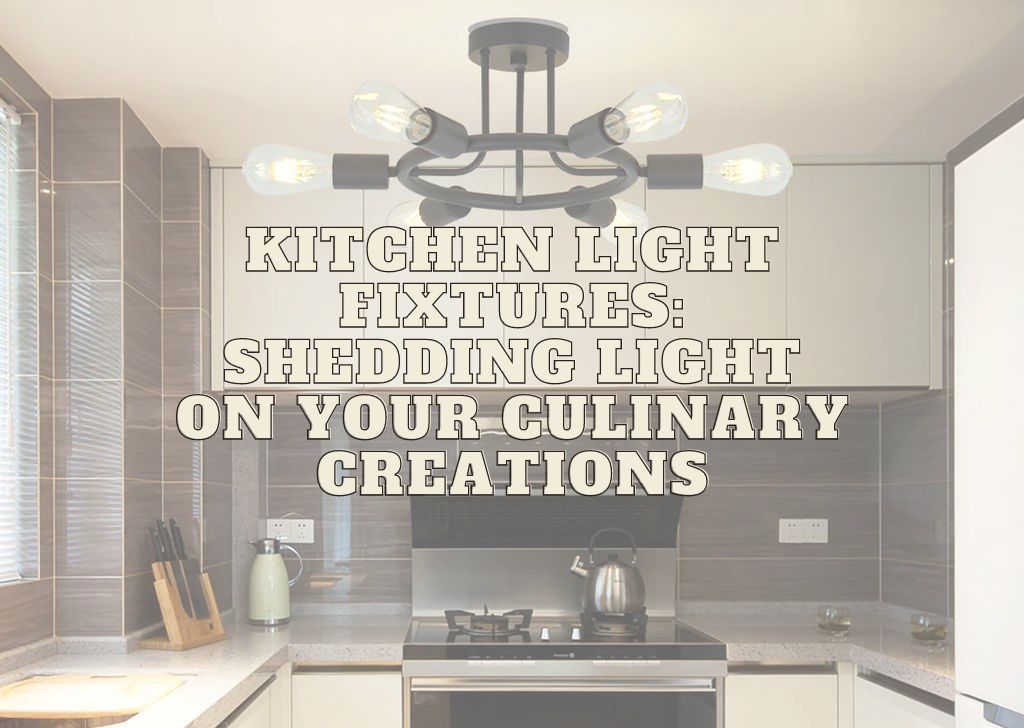The kitchen is the heart of any home, where meals are prepared, families come together, and memories are made. However, without proper lighting, it can become a dull and uninviting space. This is where kitchen light fixtures come in. They not only provide ample illumination to help you prepare meals with ease but also enhance the ambiance of your kitchen, making it a warm and welcoming space.
In this article, we will delve into the different types of kitchen light fixtures available, their benefits, and how to choose the right one for your kitchen.
Table of Contents
Types of Kitchen Light Fixtures
When it comes to designing your kitchen, one of the most important aspects to consider is the lighting. Not only does proper lighting help you prepare meals with ease, but it also enhances the overall ambiance of your space. With a variety of options available, it can be overwhelming to choose the right type of kitchen light fixtures.
Ceiling Lights
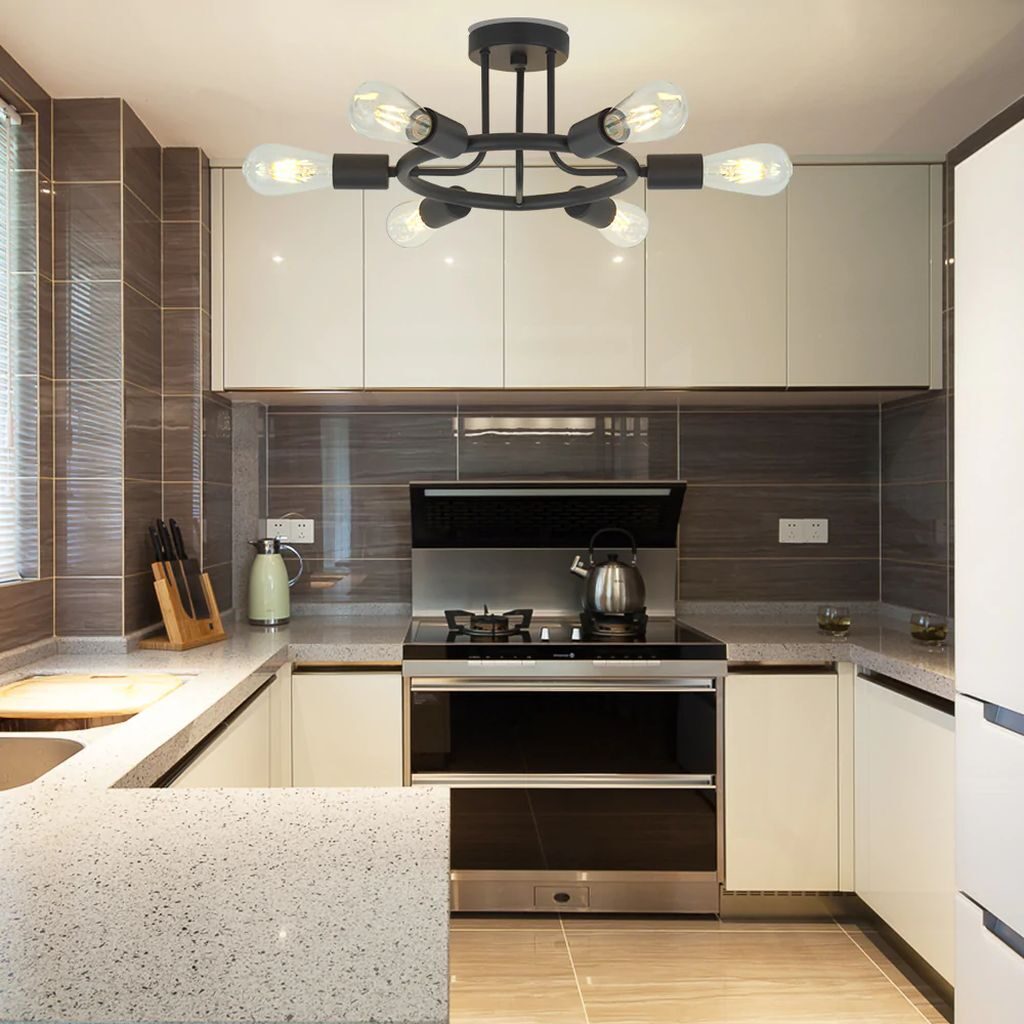
These are the most common type of kitchen light fixtures, providing overall illumination to your space. They are available in various styles, including flush mount, semi-flush, and pendant lights.
Kitchen ceiling lights are an important element of any kitchen lighting design. They provide general illumination for the entire space and can also add to the overall design aesthetic. Here are some tips for selecting and installing the right kitchen ceiling lights:
- Choose the Right Type: There are several types of kitchen ceiling lights to choose from, including flush mount, semi-flush mount, and recessed lighting. Flush mount and semi-flush mount lights are great for low ceilings, while recessed lighting can provide a clean and modern look.
- Consider the Size: Make sure the size of the ceiling light is appropriate for the size of your kitchen. A small light fixture in a large kitchen may not provide enough illumination, while a large fixture in a small kitchen may be overpowering.
- Determine the Placement: The placement of the ceiling light is important for providing adequate illumination for the entire space. In general, ceiling lights should be evenly spaced throughout the kitchen and placed in areas where there is no natural light.
- Choose the Right Bulbs: Consider the type of bulbs the ceiling light uses. LED bulbs are energy-efficient and can last for a long time, while incandescent bulbs provide a warm and cozy ambiance.
Under Cabinet Lights
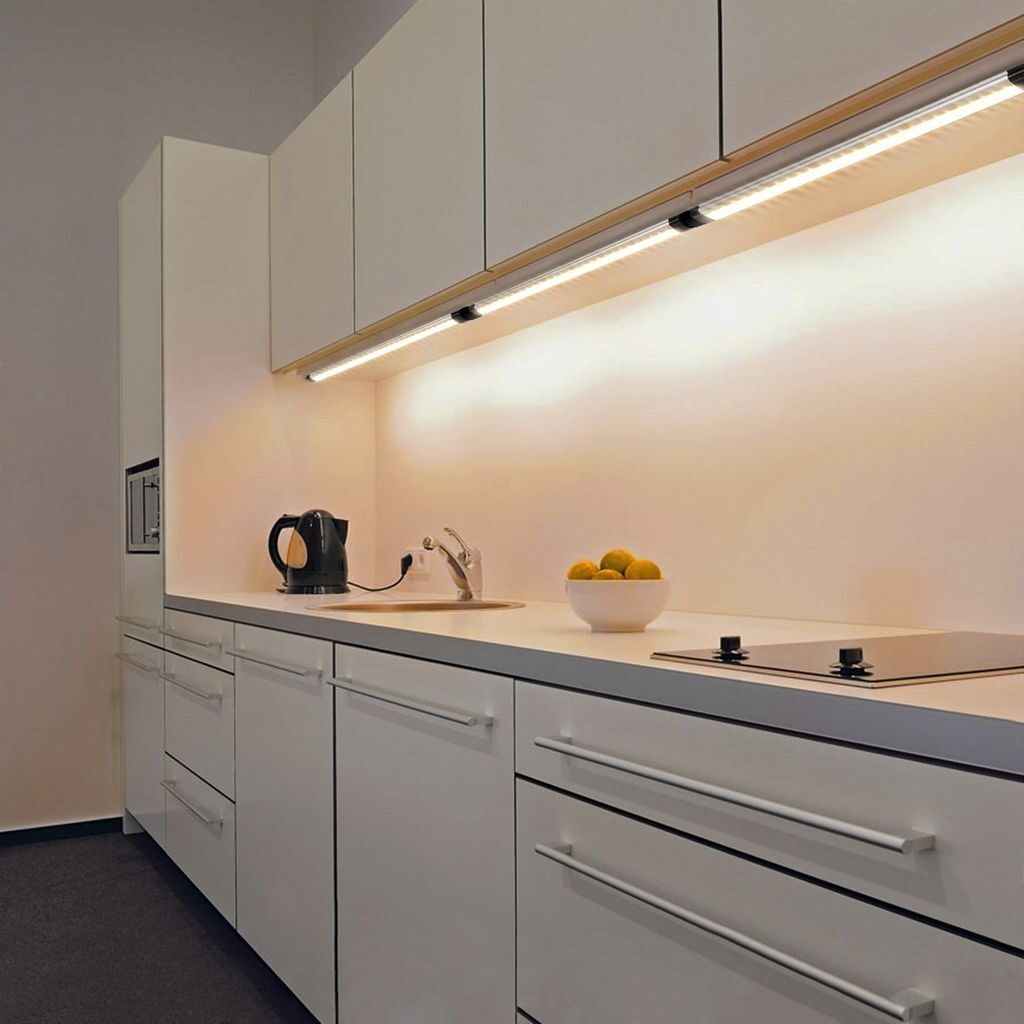
These are installed underneath cabinets to provide task lighting, making it easier to chop vegetables, read recipes, and perform other tasks. They are available in LED, fluorescent, and incandescent options.
Kitchen under cabinet lights are a popular choice for homeowners who want to add task lighting to their kitchen workspaces. They are typically installed under the upper cabinets and provide a focused beam of light that illuminates the countertop below. Here are some tips for selecting and installing the right kitchen under cabinet lights:
- Choose the Right Type: There are several types of kitchen under cabinet lights to choose from, including LED strip lights, puck lights, and linear lights. LED strip lights provide a continuous strip of light, while puck lights and linear lights provide focused beams of light.
- Consider the Size: Make sure the size of the under cabinet lights is appropriate for the size of your kitchen. A small light fixture in a large kitchen may not provide enough illumination, while a large fixture in a small kitchen may be overpowering.
- Determine the Placement: The placement of the under cabinet lights is important for providing adequate illumination for the workspace below. In general, under cabinet lights should be spaced evenly throughout the kitchen and placed in areas where task lighting is needed.
- Choose the Right Color Temperature: Consider the color temperature of the under cabinet lights. A warmer color temperature (around 2700K-3000K) can provide a cozy and inviting ambiance, while a cooler color temperature (around 4000K-5000K) can provide a brighter and more energetic feel.
Island Lights
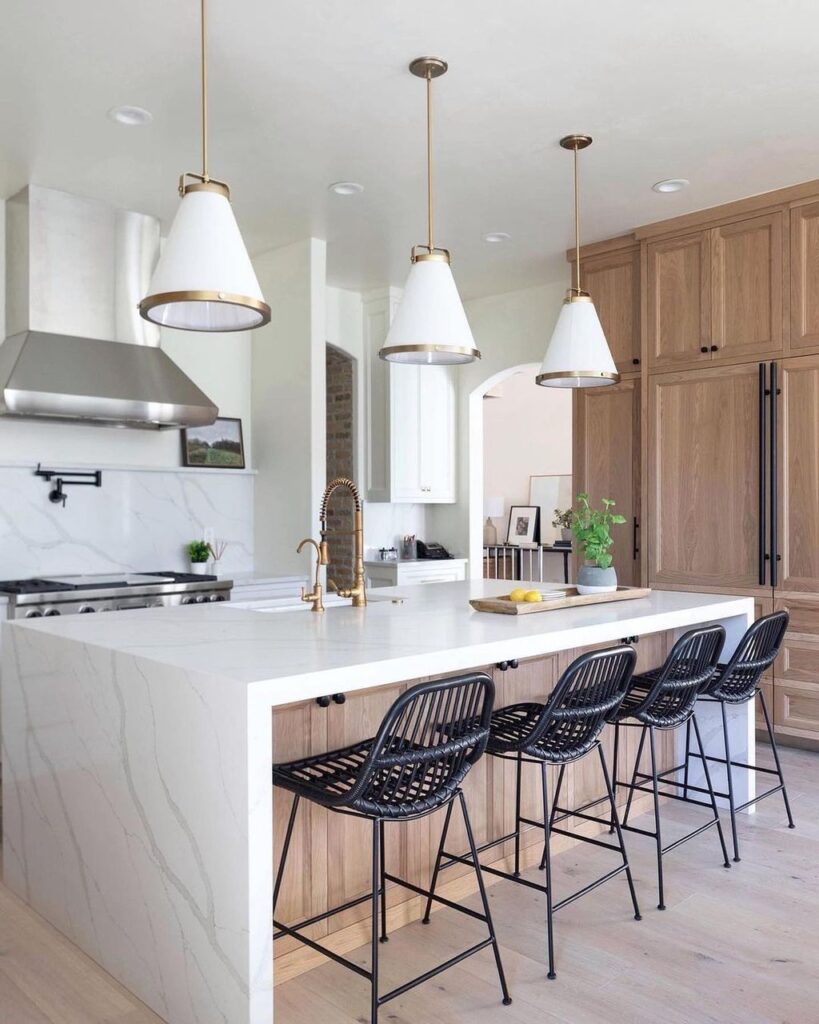
These are installed above kitchen islands and provide both task and ambient lighting. They come in a range of styles, including linear, chandelier, and pendant lights.
Kitchen island lights are a popular choice for homeowners who want to add a statement piece to their kitchen design while providing task lighting to the island workspace. Here are some tips for selecting and installing the right kitchen island lights:
- Choose the Right Type: There are several types of kitchen island lights to choose from, including pendant lights, chandeliers, and linear suspension lights. Pendant lights are a popular choice, as they come in a variety of sizes and styles, and can be grouped together to create a dramatic effect.
- Consider the Size: Make sure the size of the island lights is appropriate for the size of your kitchen island. A small light fixture over a large island may not provide enough illumination, while a large fixture over a small island may be overpowering.
- Determine the Height: The height of the island lights is important for providing adequate illumination to the island workspace while not obstructing the view. In general, the bottom of the light fixture should be around 30-36 inches above the surface of the island.
- Choose the Right Bulbs: Consider the type of bulbs the island lights use. LED bulbs are energy-efficient and can last for a long time, while incandescent bulbs provide a warm and cozy ambiance.
Recessed Lights
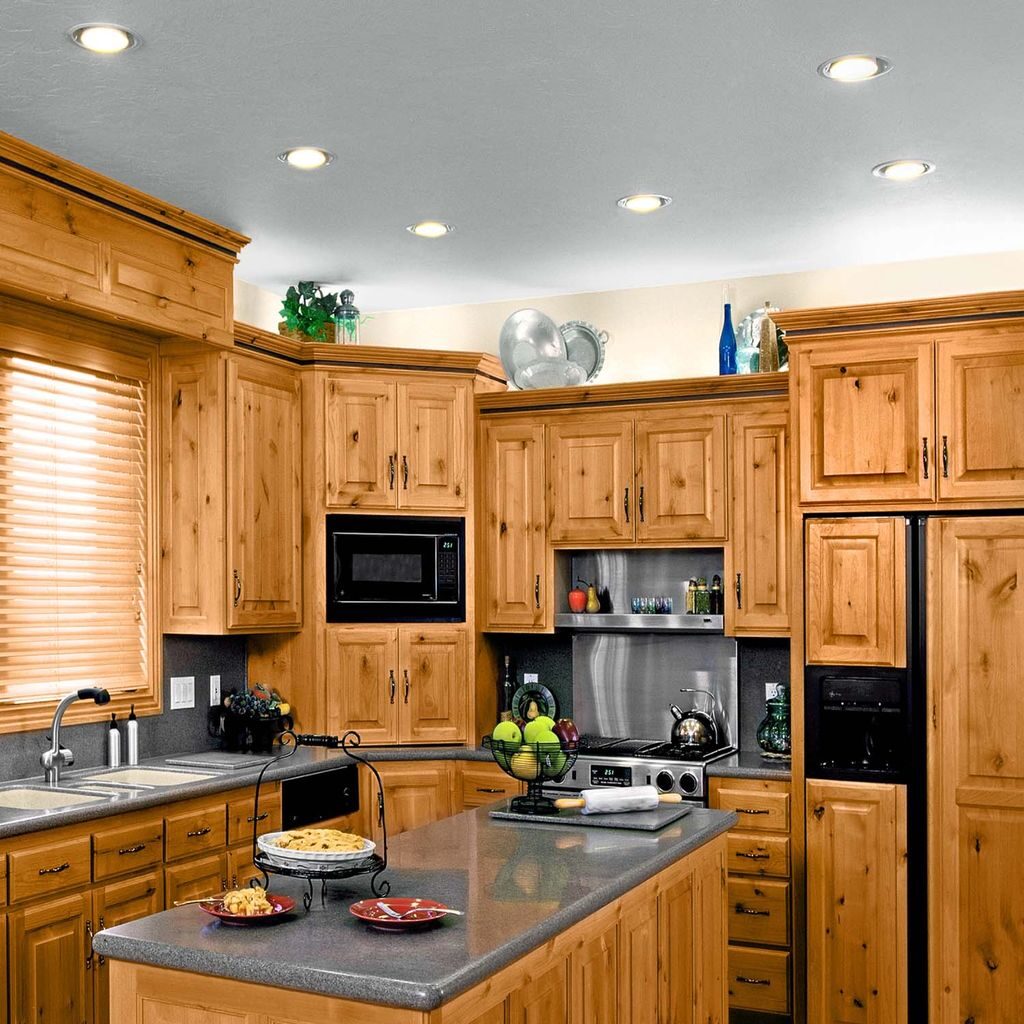
These are installed in the ceiling and provide focused lighting on specific areas of your kitchen, such as countertops or stove tops.
Kitchen recessed lights are a popular choice for homeowners who want to add subtle and unobtrusive lighting to their kitchen. Recessed lights are installed directly into the ceiling, creating a seamless and modern look. Here are some tips for selecting and installing the right kitchen recessed lights:
- Determine the Placement: The placement of the recessed lights is important for providing adequate illumination for the kitchen. In general, recessed lights should be spaced evenly throughout the kitchen and placed in areas where task lighting is needed.
- Choose the Right Size: Make sure the size of the recessed lights is appropriate for the size of your kitchen. A small light fixture in a large kitchen may not provide enough illumination, while a large fixture in a small kitchen may be overpowering.
- Consider the Beam Angle: Consider the beam angle of the recessed lights. A narrow beam angle (around 30 degrees) is ideal for task lighting, while a wider beam angle (around 60 degrees) is better for ambient lighting.
- Choose the Right Color Temperature: Consider the color temperature of the recessed lights. A warmer color temperature (around 2700K-3000K) can provide a cozy and inviting ambiance, while a cooler color temperature (around 4000K-5000K) can provide a brighter and more energetic feel.
How to Install Kitchen Lighting
Installing kitchen lighting can be a great way to improve the functionality and aesthetics of your kitchen. However, it can also be a bit tricky, especially if you’re not familiar with electrical work. Here are the basic steps to follow to install kitchen lighting:
- Plan the Layout: Before you begin, determine the type and location of the lighting fixtures you want to install. Make sure the placement of the fixtures will provide adequate illumination for the entire space.
- Turn Off the Power: Turn off the circuit breaker to the kitchen to avoid electrical shocks. Check to make sure the power is off by using a non-contact voltage tester.
- Run Wiring: If new wiring is needed, run the electrical wiring to the location of each lighting fixture. If you are not familiar with electrical work, it’s best to consult a licensed electrician for this step.
- Install Mounting Brackets: Install the mounting brackets for each lighting fixture according to the manufacturer’s instructions. Make sure they are secured properly.
- Install the Fixture: Install the lighting fixture according to the manufacturer’s instructions, making sure to connect the wiring as required. Be sure to use wire nuts and electrical tape to secure the connections.
- Test the Fixture: Turn the power back on and test the fixture to make sure it is working properly. If you are not comfortable working with electricity, it’s best to have an electrician do this step for you.
- Install Dimmer Switches: If you want to control the brightness of your kitchen lighting, install a dimmer switch for each fixture.
- Clean Up: Once you have finished installing the lighting fixtures, clean up the area and dispose of any debris properly.
Remember to always follow the manufacturer’s instructions when installing any type of kitchen lighting. If you are not comfortable working with electricity, it’s best to consult a licensed electrician to ensure that the work is done safely and correctly. With the right lighting fixtures and proper installation, you can create a functional and inviting kitchen that is perfect for cooking and entertaining.
Benefits of Kitchen Light Fixtures
The kitchen is often the hub of any household, where meals are prepared, conversations are had, and memories are made. With the right lighting, your kitchen can become a warm and welcoming space that sets the tone for your home. Kitchen light fixtures not only provide illumination for your culinary creations, but they also enhance the ambiance, improve your mood, and add to the aesthetic appeal of your space.
- Adequate Illumination: Kitchen light fixtures provide ample illumination to help you prepare meals with ease and prevent accidents while cooking.
- Enhanced Mood: Proper lighting can enhance your mood and create a welcoming atmosphere in your kitchen. It can also improve your mental and emotional well-being.
- Aesthetic Appeal: Kitchen light fixtures add aesthetic appeal to your home, creating a visual impact and improving the overall design of your kitchen.
How to Choose the Right Kitchen Light Fixture
Choosing the right kitchen light fixture can be a challenging task, as there are so many options to choose from. Here are some tips to help you select the right kitchen light fixture for your space:
- Determine the Purpose: Before you begin, determine the purpose of the light fixture. Are you looking for general illumination, task lighting, or accent lighting? Once you have determined the purpose, it will be easier to narrow down your options.
- Consider the Size: Make sure the size of the light fixture is appropriate for the size of your kitchen. For a small kitchen, a large fixture can overpower the space, while a small fixture in a large kitchen can get lost.
- Think about Style: Think about the overall style of your kitchen and choose a light fixture that complements it. For example, a modern pendant light may look out of place in a traditional kitchen.
- Consider the Ceiling Height: If you have a low ceiling, choose a light fixture that doesn’t hang too low, as it can make the room feel smaller. If you have a high ceiling, a fixture that hangs too high may not provide adequate illumination.
- Choose the Right Bulbs: Consider the type of bulbs the light fixture uses. LED bulbs are energy-efficient and can last for a long time, while incandescent bulbs provide a warm and cozy ambiance. Make sure the bulbs are appropriate for the purpose of the light fixture.
- Look for Dimmable Options: Look for light fixtures that can be dimmed, as they provide flexibility in controlling the brightness of the light. This is especially important for task lighting, where you may need brighter or softer light depending on the task.
- Set a Budget: Determine how much you are willing to spend on a light fixture and look for options within your budget. Keep in mind that high-quality light fixtures can be a long-term investment, as they can last for many years.
By considering these factors, you can select a light fixture that provides the right amount of illumination, complements your kitchen style, and fits within your budget. A well-chosen light fixture can make a significant impact on the functionality and aesthetics of your kitchen.
FAQs about Kitchen Light Fixtures
What is the ideal brightness for kitchen light fixtures?
Ans: The ideal brightness for kitchen light fixtures is between 3,000 to 4,000 lumens.
Can I install kitchen light fixtures on my own?
Ans: It is best to hire a professional electrician to install kitchen light fixtures to ensure safety and proper installation.
Conclusion
In conclusion, kitchen light fixtures are an essential component of any well-designed kitchen. They provide adequate illumination, enhance the mood, and add aesthetic appeal to your home. When choosing the right kitchen light fixture, consider the purpose, style, and bulb type to create a functional and visually appealing space. So, go ahead and light up your culinary creations with the perfect kitchen light fixtures.
